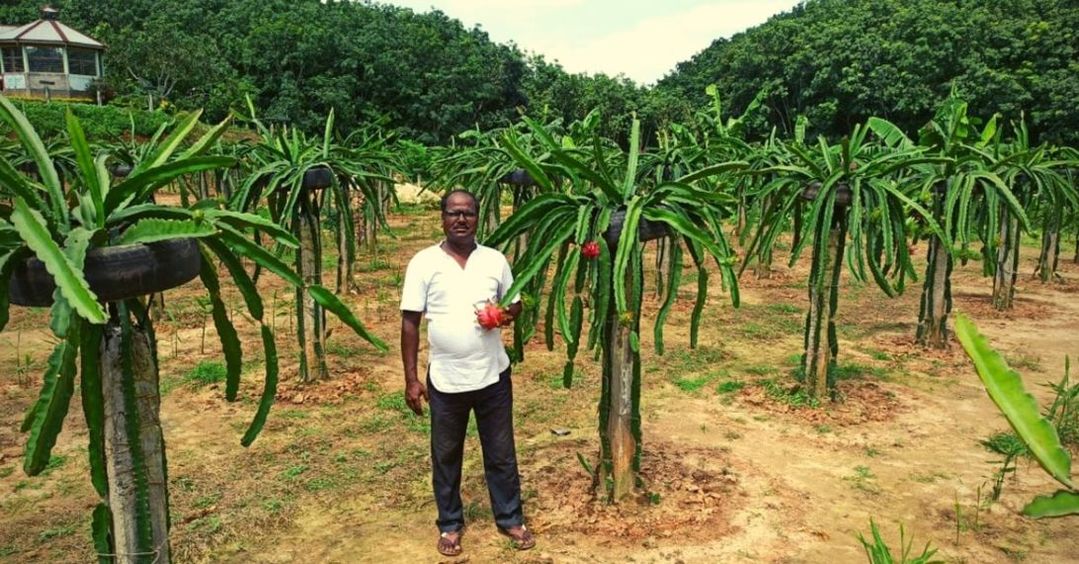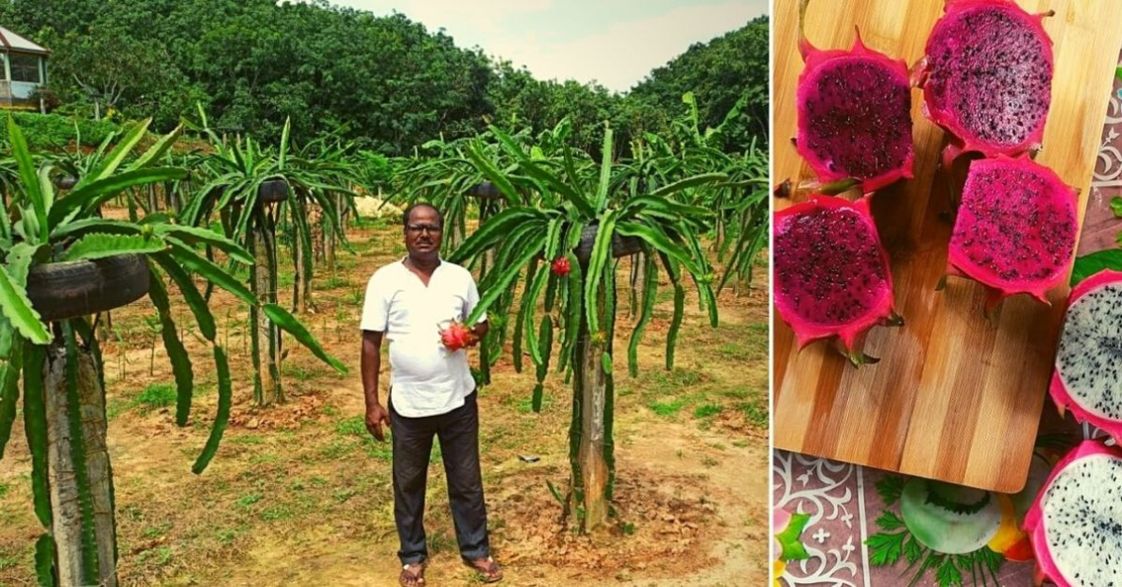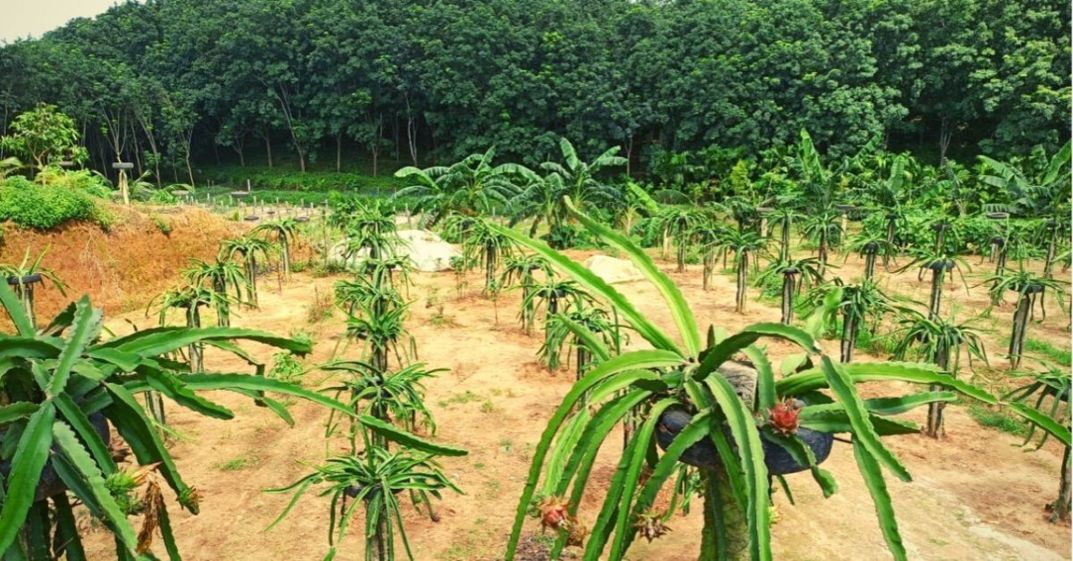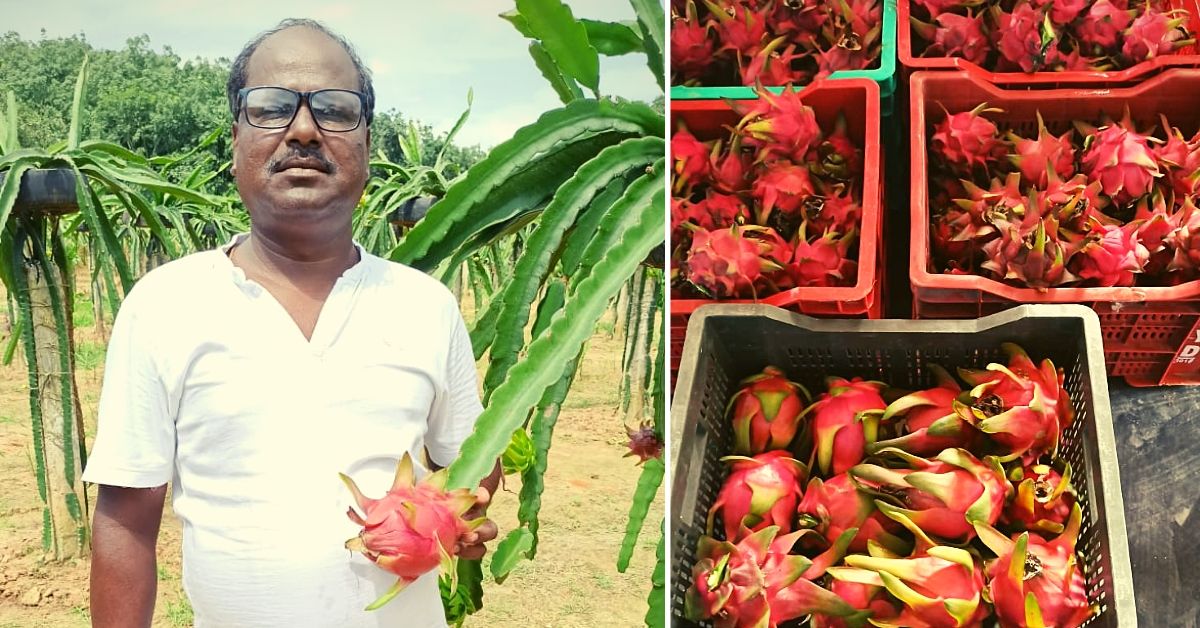YouTube Helps Tripura Farmer Grow 50 Kgs of Dragon Fruit That Sells at Rs 400/Kilo
“It might have seemed like a crazy idea to many in the beginning but now they see the reality and the potential cultivating this has. I am glad I could be one of the few to bring that to light. After all it only takes one crazy idea to start a new wave of change,"

With its bright pink skin, lush green petals and whitish pulp fitted with black seeds, the Hylocereus undatus or dragon fruit, looks like something straight out of a vivid dream.
Parimal Das, a 57-year-old farmer based in Tripura, agrees. The man has been growing several varieties of fruits including mango, lemon, sweet lime for 12 years, but couldn’t take his eyes off the dragon fruit when he saw it for the first time on YouTube.
“It’s a fascinating fruit and looks magical. The first time I saw it, I was surprised and confused and wanted to know more,” he recalls.
Native to Mexico and Central America, dragon fruits, also known as pitayas, have become extremely popular in the last few years owing to their unusual looks, low-calorie content and abundance of antioxidants.
Parimal’s growing fascination with the fruit, pushed him to try and grow them in India, at the heart of Tripura, with amazing results. In fact, his efforts were even recognised by Chief Minister Biplap Kumar Deb in a recent Facebook post.
https://www.facebook.com/bjpbiplab/videos/3260578190659812/
An Exotic Affair

Parimal is an avid horticulture enthusiast based in West Tripura. Speaking about his life, thus far, he says, “Plants have defined my life. First with my father and then independently, I started gardening and farming, not as a livelihood, but as a way of life,” adding that his passion soon became a profession, when he began to grow mangoes, lemons and sweet lime commercially.
Keen on expanding his knowledge in all things green, Parimal claims that he has gone to great lengths to discover new varieties in the plantae king—from visiting local nurseries, to passionate interactions with farmers and gardeners in India and abroad.
It was during one such endeavor through the internet, when he came across the dragon fruit. He started reading up about its benefits, and aside from its looks, he was also bowled over by its taste. “I have been growing lemon, rubber, mango and sweet lime in Kanchanmala, my ancestral village in West Tripura, for many years. But, now with more demand for such exotic fruits and better connectivity with the world, I wanted to try something new, so, I compared the traditional growing conditions of its plant with that of Tripura, and decided to grow them here,” he says.
In 2017, he managed to procure some 50 saplings from Kolkata and Bangladesh and began to prepare a 1.5 acre plot of land for the plantation.
“I decided that the 1.5 acre orchard would be an exclusive dragon fruit plantation and started out by building 8 concrete pillars that could hold almost 4 plants. In about 18 months of planting, they started to bear fruits, almost 5 kg per pillar,” he says.

Although a tropical plant, dragon fruit cultivation requires a temperature between 20 to 30 degree Celsius, and filtered sunlight. In case of high sunlight areas, one needs to grow them under shade. However, as Tripura’s climate falls under this range and is an area with moderate to low sunlight, growing dragon fruit plants is ideal, says Parimal.
“This part of Tripura is hilly, and has a cool temperature and is abundant in extremely nutritious and fertile red soil. As it turns out, it was perfect to grow dragon fruit, and since 2017 the harvest has only been increasing,” he adds.
According to Parimal, it takes a minimum of 3 years for its plant to mature and give good harvest, and so this year, the yield is likely to triple with almost 12-15 kg per pillar. Now with over 500 pillars bearing fruits from 2,000 plants, Parimal hopes to have a profitable future.
“This plant bears fruit all around the year, and in December 2019, I managed to sell over 50 kg of dragon fruit, at a wholesale rate of Rs 400 per kg. This year, the first lot has already been sold earning me almost Rs 30,000. When you compare the returns and the investment, you will realise how profitable this could be for Indian farmers,” adds Parimal who made an initial investment of Rs 15,000 to get the dragon fruit farm started.

Like him, few other farmers in Maharashtra, Karnataka and West Bengal are also making efforts to cultivate this fruit, however Parimal believes that with proper awareness and support from the government, this could actually be a very viable livelihood for many.
Like Tripura’s famous queen pineapples that are exported to several countries like Qatar, Bangladesh, Dubai, etc in addition to several Indian metro cities, dragon fruit cultivation too can become a milestone in the state’s overall agricultural growth.
“It might have seemed like a crazy idea to many in the beginning but now they see the reality and the potential cultivating this has. I am glad I could be one of the few to bring that to light. After all it only takes one crazy idea to start a new wave of change,” he concludes.
(Edited by Gayatri Mishra)
Like this story? Or have something to share?
Write to us: [email protected]
Connect with us on Facebook and Twitter
If you found our stories insightful, informative, or even just enjoyable, we invite you to consider making a voluntary payment to support the work we do at The Better India. Your contribution helps us continue producing quality content that educates, inspires, and drives positive change.
Choose one of the payment options below for your contribution-
By paying for the stories you value, you directly contribute to sustaining our efforts focused on making a difference in the world. Together, let’s ensure that impactful stories continue to be told and shared, enriching lives and communities alike.
Thank you for your support. Here are some frequently asked questions you might find helpful to know why you are contributing?


This story made me
-
97
-
121
-
89
-
167













